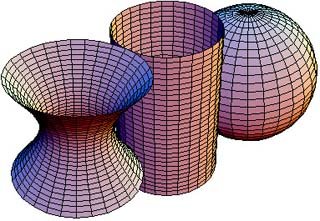What is Differential Geometry? The Calculus of Continuous Manifolds
Differential Geometry is a form of advanced mathematics which deals with the properties of continuous manifolds in multiple dimensions, using basic tools of calculus.
Standard calculus is based on two fundamental ideas - differentiation and integration. Differentiation is a form of mathematics concerned with the determination of a given function's rate of change, while integration is used to determine displacement, essentially.
Both of these elements are essential in order to achieve a complete mathematical understanding of any given function, but standard high-school and college calculus deals only with functions with single variables - two dimensional lines on a standard Cartesian coordinate system.
What makes Differential Geometry Different?
Differential geometry takes these same ideas of calculus and applies them to problems of higher dimensions, using standard differentiation and integration techniques on curved surfaces (manifolds) of infinitely many points. Differential geometry is not limited just to the "standard shapes" of geometry, such as squares, triangles, etc. but finds its greatest applications in quantifying the rate of change and displacement within curved "planes."

image credit
One of the most important and best known applications of differential geometry can be found in one of the key physical theories of the past century - Einstein's general theory of relativity. This theory defines space and time as consisting of just a single, four-dimensional continuum which is curved due to mass (which is the cause of gravity). Einstein used very advanced differential geometry in order to solve problems regarding the exact shape and "behavior" of this space-time manifold - a problem which still intrigues differential geometers to this day.
Other Uses of Differential Geometry
Beyond determining the geometry of space-time (a very important application), differential geometry is used in a wide variety of other applications. In fact, any application where a given system can be interpreted as a multi-dimensional geometric model (though more dimensions means more difficulty), differential geometry can come in handy.
Applications for this form of mathematics are found throughout physics (quantum mechanics, the study of electromagnetic waves, string theory, etc.), in economic theory, in engineering, and elsewhere. General relativity, however, is surely the most obvious use of differential geometry, as physicists (including Einstein himself) have been able to use these mathematical tools in order to fully define aspects of the universe which would previously have seemed far beyond our grasp.
Such is the Power of Mathematics
Of course, many mathematicians who spend much of their time focused on problems of differential geometry don't necessarily need any pragmatic applications in order to find enjoyment in these ideas. To some, the pure mathematics of it is sufficient, and in differential geometry, there is certainly much mathematical enjoyment to be found.
References:
Mlodinow, Leonard. Euclid's Window. Simon and Schuster
